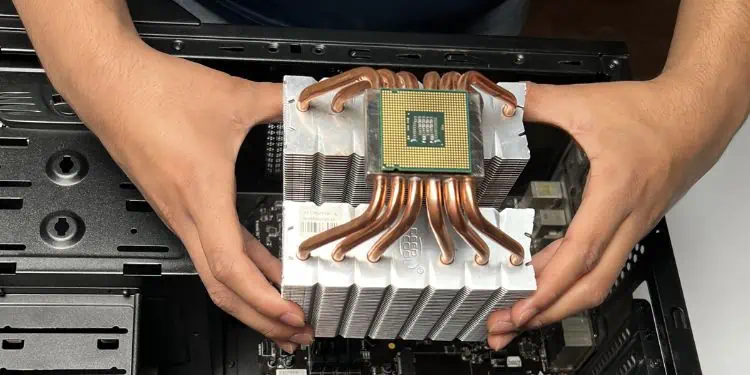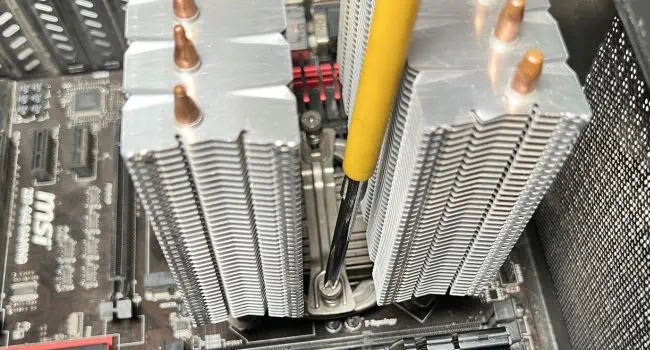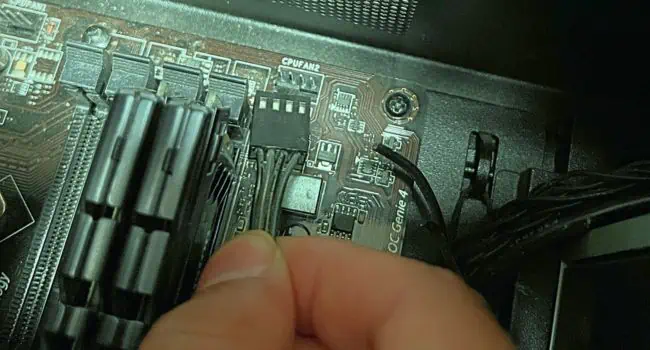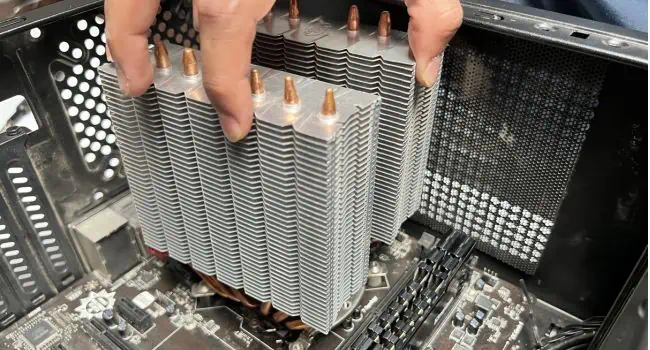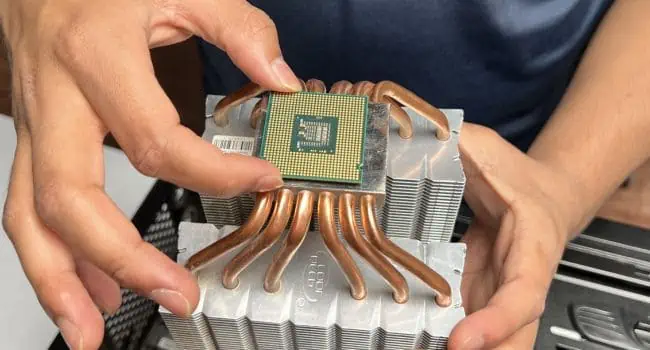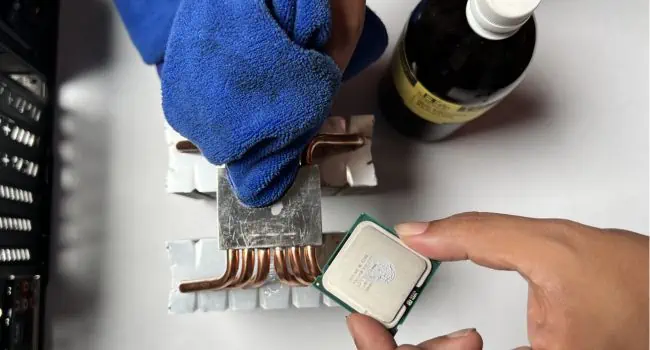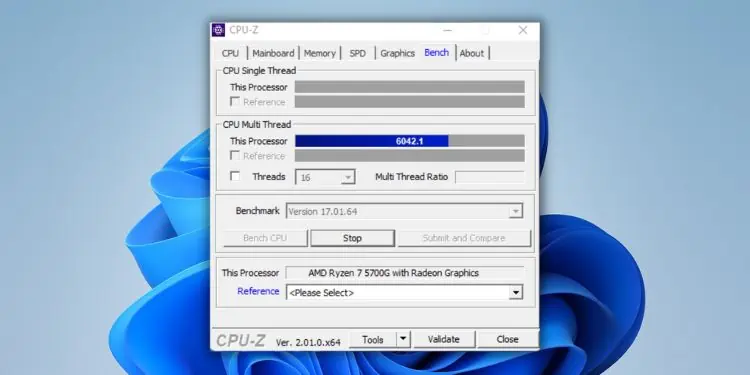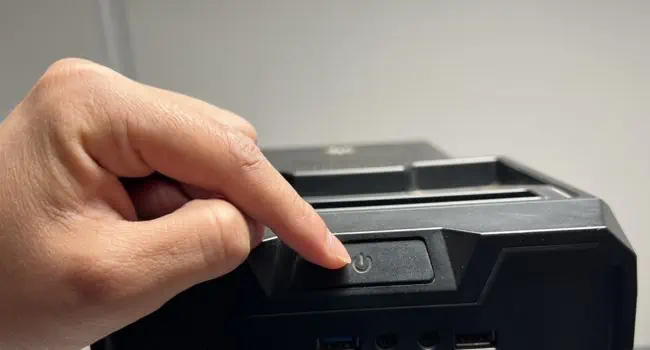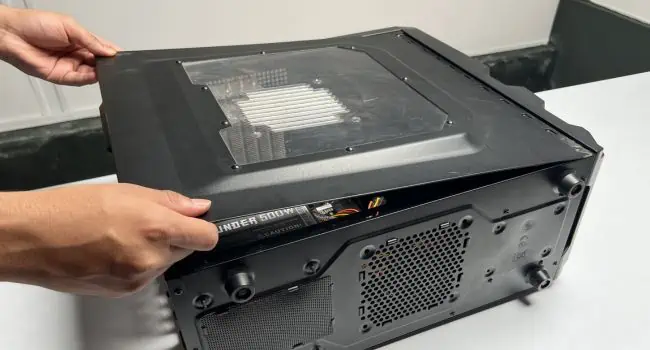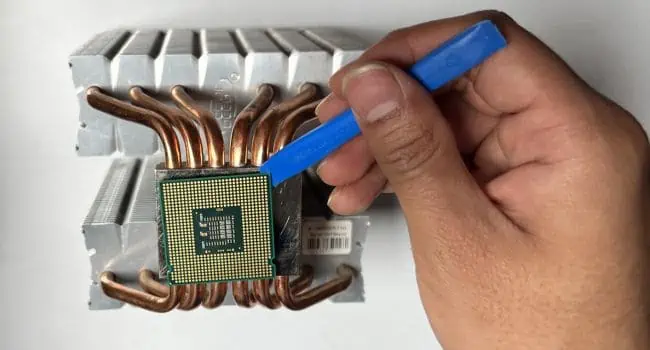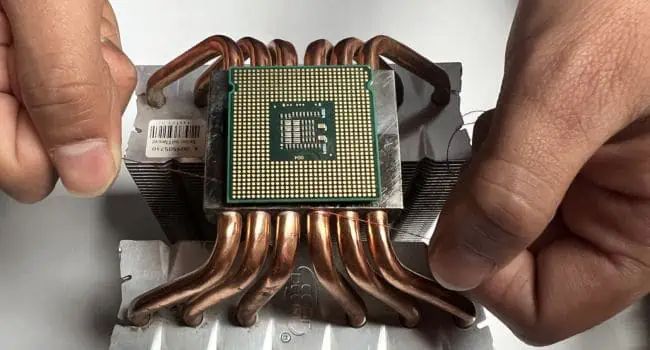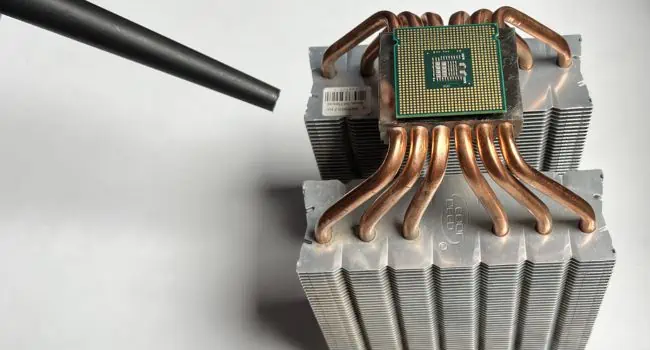If you haven’t used your computer for a while, it might cause the cooler to get stuck to the integrated head spreader (IHS) as if it’s glued. Usually, this happens if you hadn’t correctly applied the thermal paste in the first place or used one with poor quality.
The right way to separate the cooler from the CPU is to loosen the thermal paste bond and gently pull it out.
A simple twist-and-pull method should generally work. In case that didn’t help or you pulled the cooler too strongly that even caused the CPU to come out, here are some possible solutions to fix it.
Important: Before handling hardware components, make sure to ground yourself to get rid of the built-up static charge from your body.
Twist and Pull Method
Let’s start with the most basic method. This is for those users who do not often tinker with their hardware components. If you have already tried this, you may move on to the next method.
- Start by untightening the spring screws (generally in stock coolers) or unlocking the cam levers from the retention frames (usually in HSF/CPU coolers).

- Also, unplug the CPU FAN cable from the respective header.

- If you’re using an RGB cooler, make sure you’ve removed the dedicated RGB cable as well.
- Next, hold the coolers firmly and twist the cooler gently in both clockwise and anti-clockwise directions. You should feel that the bond between the CPU IHS and the cooler (created by the thermal paste) is slowly breaking.

- While you’re twisting and turning, pull the cooler upwards applying very little pressure. Otherwise, you might end up pulling the CPU along with the cooler.
If you yanked out the CPU from its slot, you do not have to worry unless the pins are bent. This is a common problem in AMD Ryzen (unless you’re using the latest 7000 series that have no golden pins) and some older Intel chips (that do not utilize the LGA architecture).
While you can fix the bent pins following our other guide, I would rather advise seeking professional help. This is a difficult task, and you may damage the chip if not done right.
However, if the pins are all good or your CPU instead utilizes flat gold contacts, here’s what to do next:
- Hold the processor firmly (avoid touching the pins/contacts with your fingers) and wiggle it a bit.
- Once you’re able to feel that the thermal paste bond is breaking, try pulling it out gently.

- If you’re successful in removing the stuck CPU from the cooler, clean the paste using Isopropyl Alcohol dipped in a lint-free cloth from both surfaces.

Note: In case you’re going to reinstall it, make sure you first reseat the CPU appropriately, secure the screws or retainer frames, and apply a good quality thermal paste in the IHS.
Running a Stress Test to Increase CPU Temperature
In some cases, the thermal paste bond doesn’t break quite easily, and the CPU is stuck to the cooler acting like it’s glued. No matter how hard you try twisting and pulling the cooler, it simply won’t come off the motherboard.
The best possible solution in such a scenario is to increase the CPU temperature by running a stress test. Once enough heat is generated, the thermal paste starts working to transfer the heat to the cooler. This will soften the paste, and gently pulling the cooler should now separate it from the CPU.
- First of all, tighten the spring screws or lock the cam levers based on the type of cooler you have.
- Also, connect all the cables (CPU Fan, RGB, and others) you disconnected earlier.
- Start your PC and perform a stress test using a preferable tool. Else, you may run a high-intensive application (playing a game would be the best option) for about half an hour. This should be enough to soften the thermal paste.

- Now, shut down your computer.
- Next, discharge the capacitors by pressing the power button for about 10 seconds.

- Then. open the PC casing (in case you closed it earlier), disconnect the cables, and untighten the spring screws or unlock the cam levers.

- Finally, try the twist-and-pull method. This time, the cooler should come off without the CPU stuck on it.
Pull Using a Flat Headed Tool
If you pulled the cooler too strongly, the cooler with the stuck CPU gets out. In such cases, inserting a flat-headed tool and gently pushing the CPU upwards should do the trick.
- Take any flat-headed tool of your choice. A plastic spudger would be the best option. I do not recommend using a metal tool or very-sharp objects that may cause scratches to the IHS.
- Navigate to any corner of the CPU and insert the tool underneath it.

- Now, gently apply pressure upwards and the CPU should pop right out. Avoid applying too much force as this can cause the chip to fly high and hit the surface, bending/damaging the pins.
- You may now clean the thermal paste from both the CPU and cooler.
Thread/String Method
As mentioned above, a flat-headed tool can be a little risky. So, the best option would be to use a thread or string. Most users who faced this problem used regular dental floss or a fishing line and the technique has worked quite well.
- Take the string/thread to the corner and insert it beneath the chip.
- Just like you flush your teeth, start taking the string back and forth to remove the bond.

- The processor should get removed as soon as you reach somewhere in the middle. In case it is completely stuck, you might require taking the string from one corner to the other.
Apply External Heat
The above solutions should be enough to remove the stuck CPU from the cooler. But if you couldn’t do it, it’s probably because the processor was not properly heated when running a stress test. In this case, you may apply heat to the heatsink using a hair dryer or heat gun. Here’s the right way to do it:
- Before anything else, make sure you remove the cooler fans first.
- Now, apply heat to the heatsink (not directly to the CPU) using a heat gun or hair dryer.

- After the heatsink is properly heated, the thermal paste bond should start breaking. Once you feel that it has moderately heated (usually two to three minutes is enough), start twisting the socket in both directions to remove it.
- In case that doesn’t help, you may opt for the flat-headed tool or thread/string method as discussed above.

